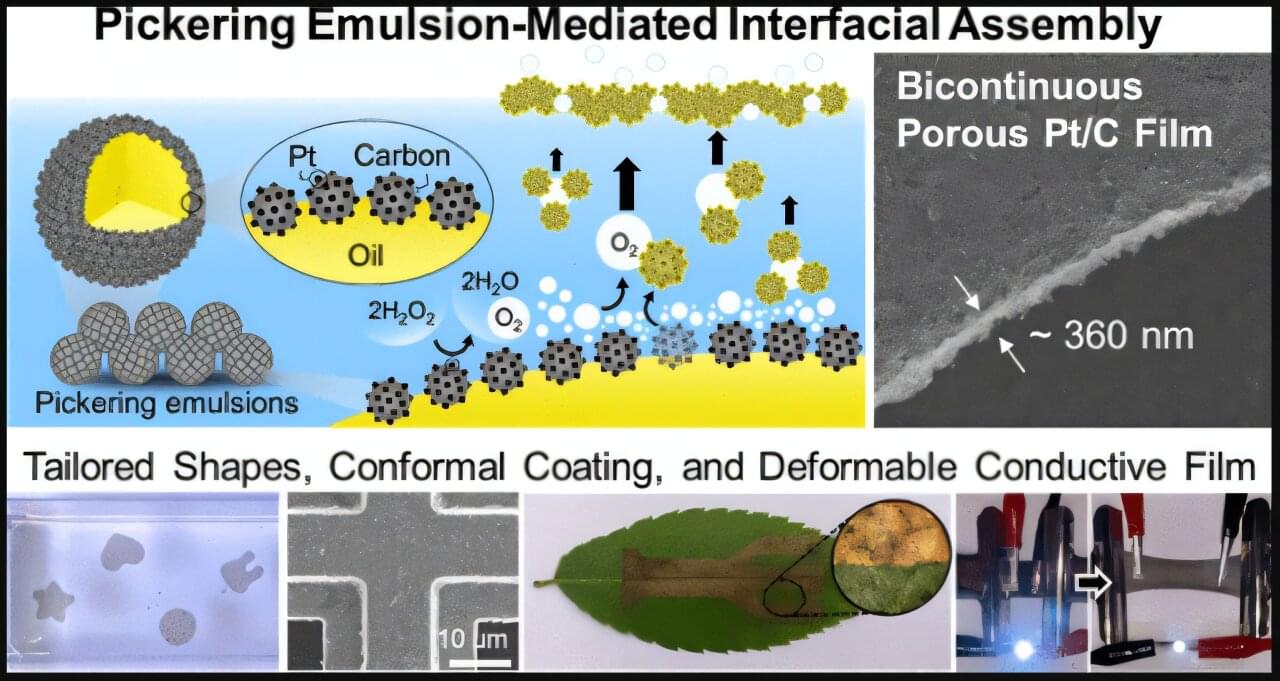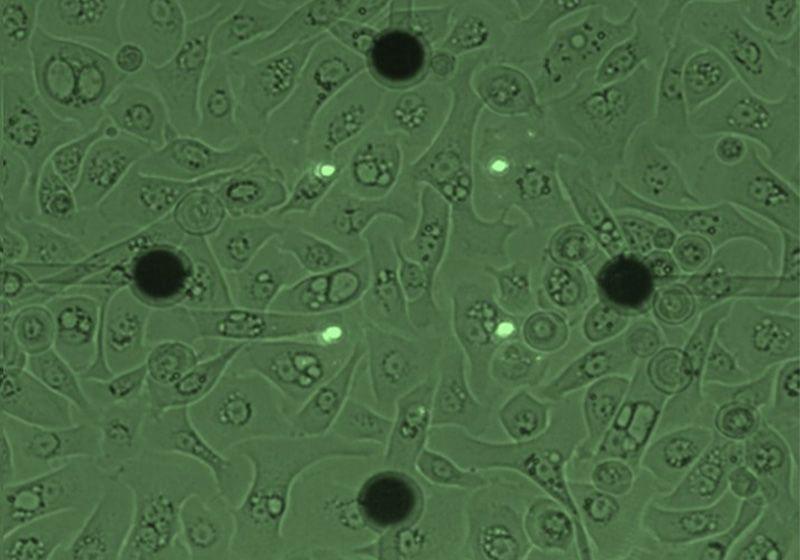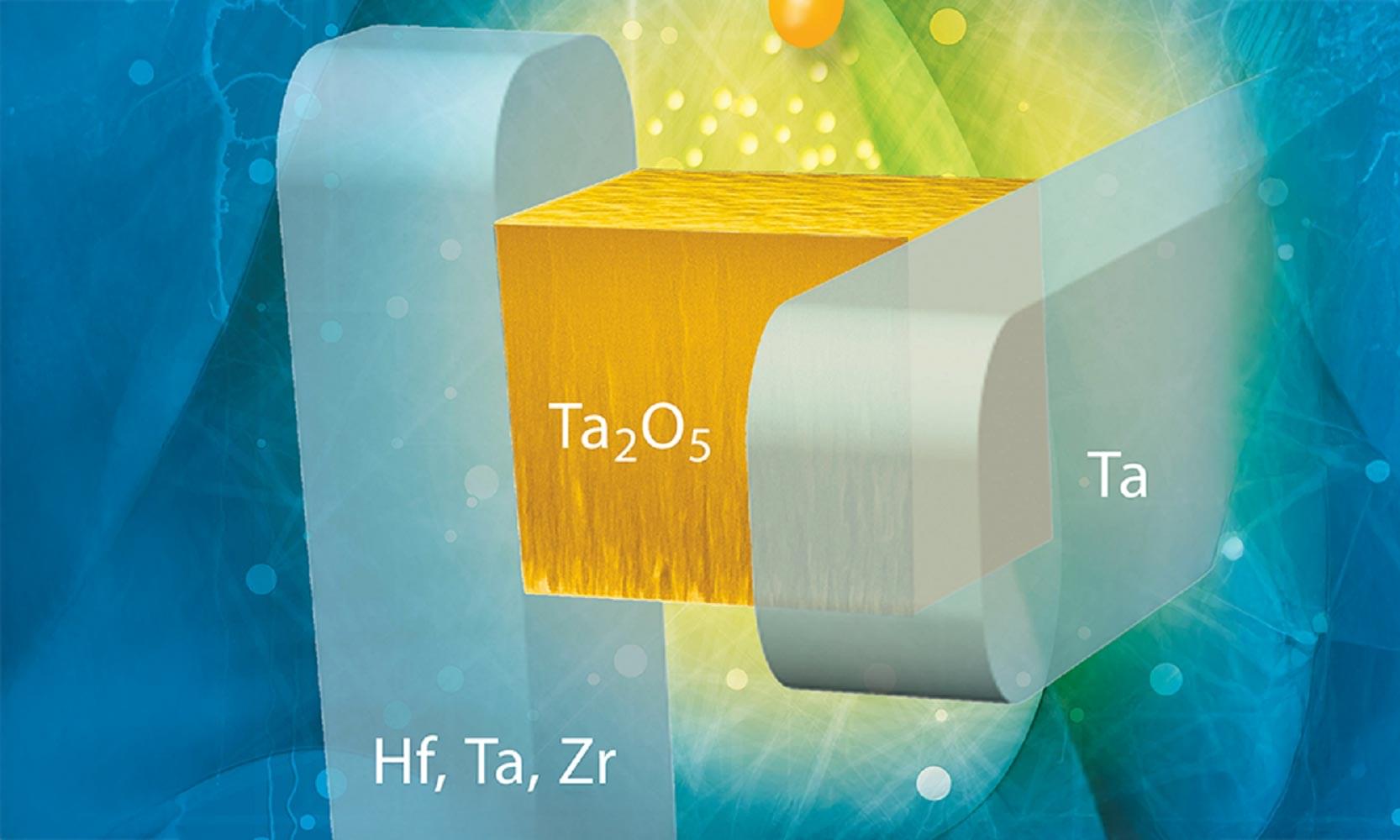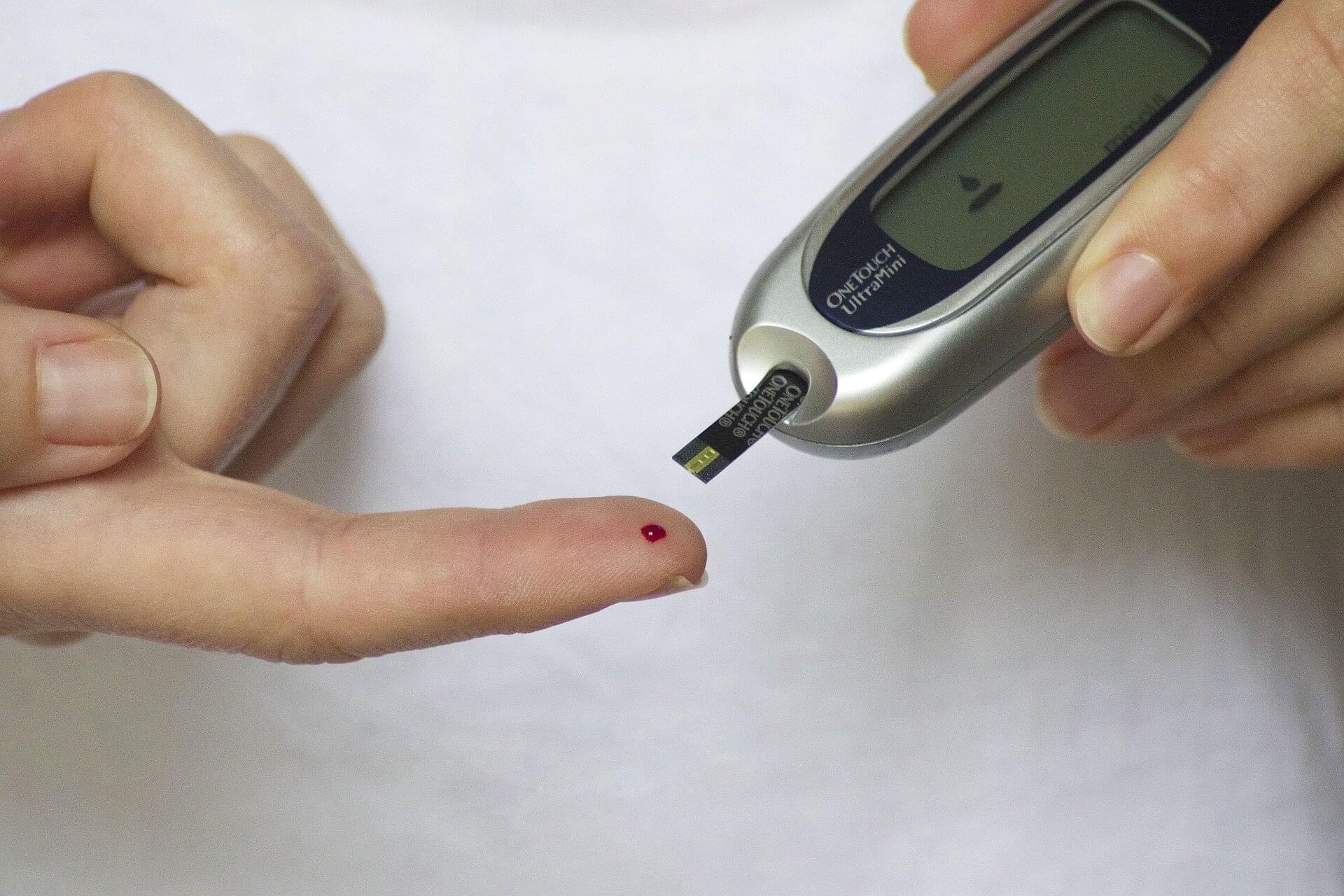A full Dyson swarm could unlock near-limitless energy—but also turn Earth into an unlivable furnace, warns a new study.




A new technology has been developed that enables the manufacturing of thin films, which typically require complex processes, using only water and oil in just one minute. Professor Kang Hee Ku and her research team from the School of Energy and Chemical Engineering at UNIST announced their novel process for creating catalytic thin films using oil droplets dispersed in water.
The developed technology involves a process in which nanomaterial precursors attached to the surface of oil droplets float to the surface of the water, where they assemble into a thin film. When hydrogen peroxide is added, it decomposes due to the thin film precursors, producing gas bubbles that cause the precursors to be lifted and assembled on the water surface within one minute.
This process allows for precise control of the thin film thickness, adjustable from 350 μm, and enables the synthesis of thin films covering an area of up to 100 cm² using various raw materials. The resulting thin films exhibit a porous structure with a high surface area, featuring exceptional mechanical strength and flexibility.



Brain injury, disease and subsequent interventions can alter behaviour, providing a unique opportunity to study cognitive processes. This Collection seeks to bridge the gap between neurologists and neurosurgeons studying clinical disorders and neuroscientists studying neural processes underlying typical cognition.
The editors at Nature Communications, Communications Biology and Scientific Reports therefore invite original research articles examining neural mechanisms underlying cognitive functions in people affected by neurological conditions. This call for papers includes but is not limited to studies in patients with epilepsy, brain tumours, stroke, neuropsychiatric disorders, neurodegenerative disease or traumatic brain injury using brain stimulation and recording techniques and/or neuroimaging that offer new insights into the mechanisms behind cognitive processes. We also encourage submissions aiming to develop best practices and reporting of these studies. Preclinical work is not within scope for this collection.
This is a cross-journal Collection across Nature Communications, Communications Biology and Scientific Reports. Please see the relevant journal webpages to check which article types the journals consider.

A new kind of memristor mimics how the brain learns by combining analog and digital behavior, offering a promising solution to the problem of AI “catastrophic forgetting.”
Unlike traditional deep neural networks that erase past knowledge when learning something new, this innovative component may retain previous learning, just like our own brains.
Understanding “Catastrophic Forgetting” in AI.

Jaeb Center for Health Research conducted a randomized controlled trial evaluating the impact of automated insulin delivery (AID) in adults with insulin-treated type 2 diabetes. AID significantly lowered glycated hemoglobin (HbA1c) levels and improved glucose control compared to standard insulin therapy with continuous glucose monitoring (CGM).
AID therapy resulted in a mean HbA1c reduction of 0.9 percentage points over 13 weeks, while the control group experienced a 0.3 percentage point reduction.
Automated insulin delivery systems have demonstrated benefits for patients with type 1 diabetes, yet their efficacy and safety for individuals with type 2 diabetes remain less established. Prior studies have either lacked randomized controlled designs or involved limited sample sizes, creating a gap in clinical understanding.


Japan’s fledgling space defense sector is taking its cues from the US Space Development Agency, which is pursuing a novel concept based on constellations of small satellites and maximum use of existing commercial technologies. Space policy researcher Umeda Kota discusses the challenges facing Japan as it embraces the SDA’s “proliferated architecture” for military communications, missile detection and tracking, and other purposes.